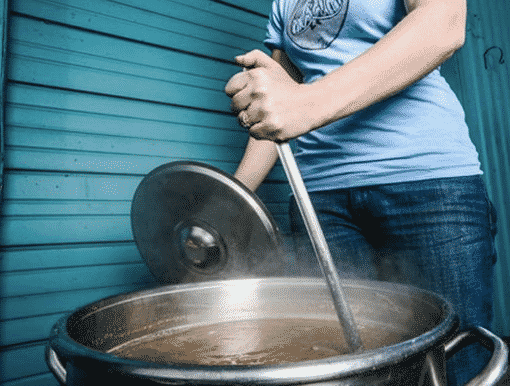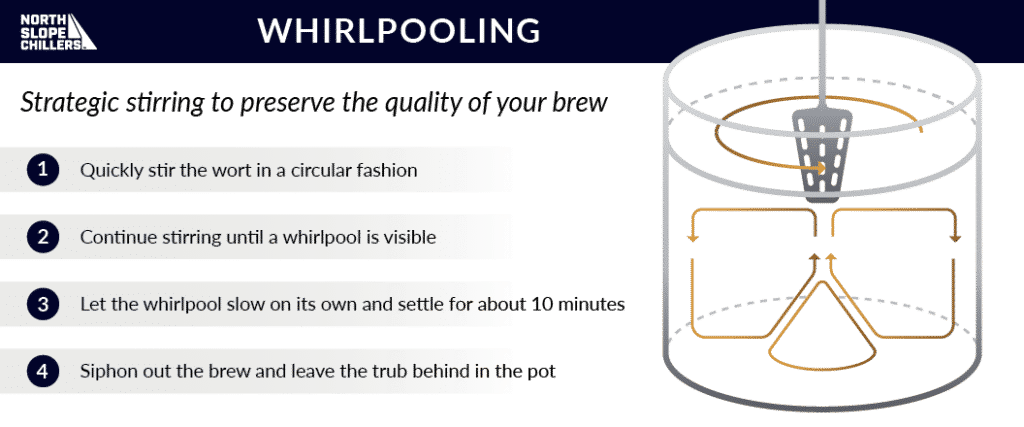What Is Whirlpooling?
Whirlpooling. Dangerous when floating a river, but critical when brewing beer. To put it simply, whirlpooling separates the good stuff in your brew from the waste that can be thrown away.
Because whirlpooling is such an important part of the brewing process, simply stirring just isn’t going to cut it. Let’s dive into the brew, shall we?

Wort And Trub
Before you can ferment your brew, you have to separate the brewed wort from the trub.
For those who don’t speak beer, here’s a quick glossary:
Wort:
Wort is “the sweet, amber liquid extracted from malted barley that the yeast will later ferment into beer.” According to Howtobrew.com, whirlpooling helps prepare the wort for fermentation by “gathering most of the break and hops into the center of the pot to better enable the siphon to draw off clear wort from the side.”
Trub:
Beerandbrewing.com identifies trub as “a collective term covering sediments formed in the brewing process during wort boiling—called hot break—and upon cooling the wort before primary fermentation boiling—called cold break—as well as during cold storage of fermented beer, which is called cold trub.” In any form, trub is usually discarded by brewers as a waste-product.
Whirlpooling is the process of steeping hops in a way that preserves oils essential for wort flavor while separating out the trub.
Let It Whirl
The swirling motion of the brew prevents most of the hop oils from boiling away. You can whirlpool your brew by using a spoon to stir or anything that will get the water moving.
The main benefits of whirlpooling are preserving flavoring oils from boiling off and collecting trub to be disposed of. Experts in whirlpooling will do so in a way that shapes the trub into a cone at the bottom of the boiling pot:

Once you’ve moved the wort brew to the fermentation chamber, you can throw away the trub. Some homebrewers use trub as a fertilizer for their lawns and gardens. Others use it as a drain filter due to the trub’s straining properties.
Temperature Control
Throughout the brewing process, ensuring your brew doesn’t get too hot or cold is critical. North Slope Chillers offers fermentation chillers and Keg Coolers to help keep your brew at the desired temperature during each stage. For more information about how North Slope Chillers can help you brew the finest craft beer you’ve ever made, call (866) 826-2993 or email [email protected].

